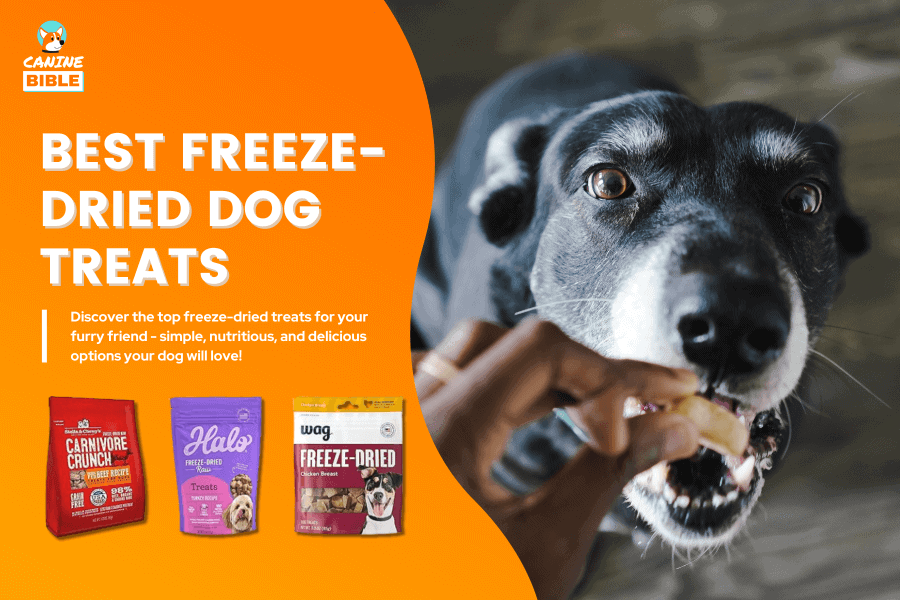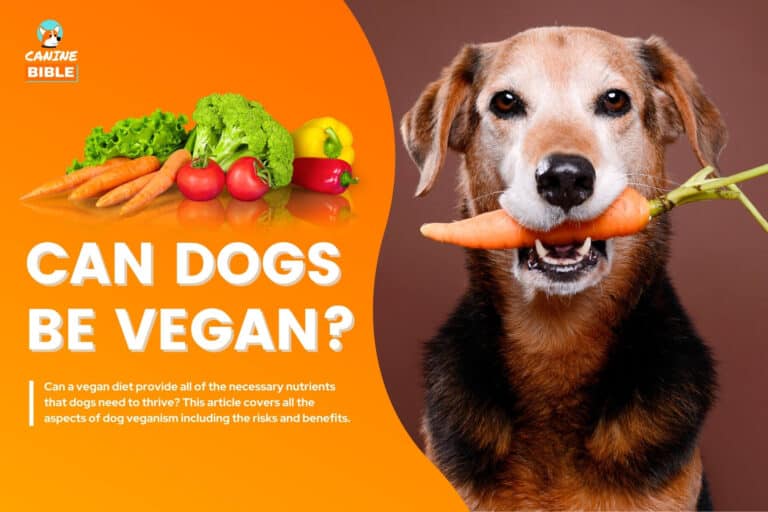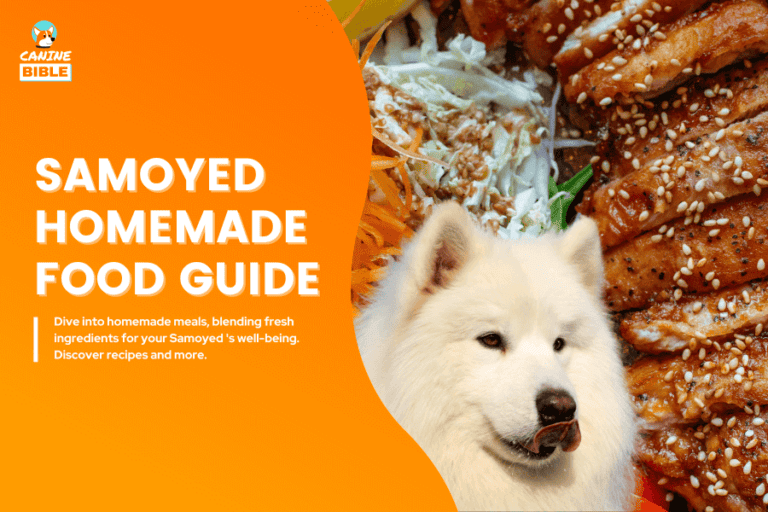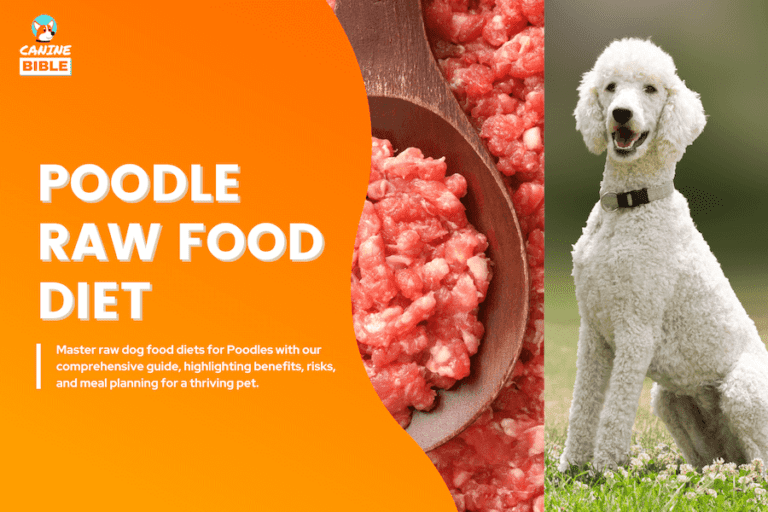Are Freeze-Dried Treats Good For Dogs? Are They Healthy & Safe?

Canine Bible is reader-supported. We receive affiliate commissions via some of our links. This doesn’t affect rankings. Learn more.
When you hear the words “freeze-dried,” what comes to mind? Perhaps you think of fruit snacks or those little oxygen packs that keep your beer cold. You probably don’t think about dog treats. Freeze-dried dog treats have been gaining popularity over the last few years. But what exactly are freeze-dried treats? Can dogs safely eat freeze-fried dog treats? And if so, are there any benefits? Are they better than regular dog treats? We answer these and all your questions about these treats. Let’s dive right in!
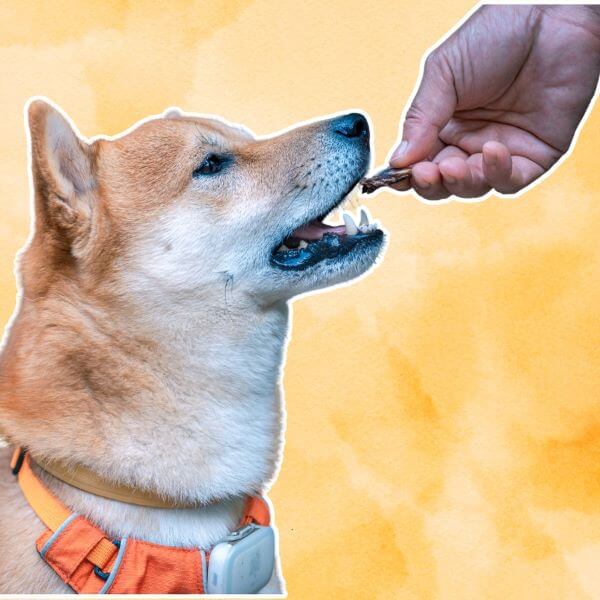
What Are Freeze-Dried Dog Treats?
Freeze-dried dog treats are snacks for dogs made by freezing raw ingredients and then removing the moisture under a vacuum. This process preserves the natural nutrients and flavors, resulting in lightweight, shelf-stable treats that maintain 97% of the nutritional content of the raw ingredients. They are known for their convenience and purported health benefits.
How Are Freeze-Dried Dog Treats Made?
Dog treats made through a process known as freeze-drying (or Lyophilization) are classified as freeze-dried dog treats. Typically, most freeze-dried dog treats are made from high-quality, often human-grade ingredients, including meats, organ meats, fruits, vegetables and other organic components.
According to the FDA, freeze-drying is a process where water is removed from a product (or ingredient) after it has been frozen and placed under a vacuum. This allows the ice to change directly from a solid to a vapor, bypassing the liquid phase. This direct transition from solid to gas is known as sublimation.[1]
*Freeze-dried dog treats are not the same as dehydrated dog treats. We explain below.
Are Freeze-Dried Treats Good For Dogs?
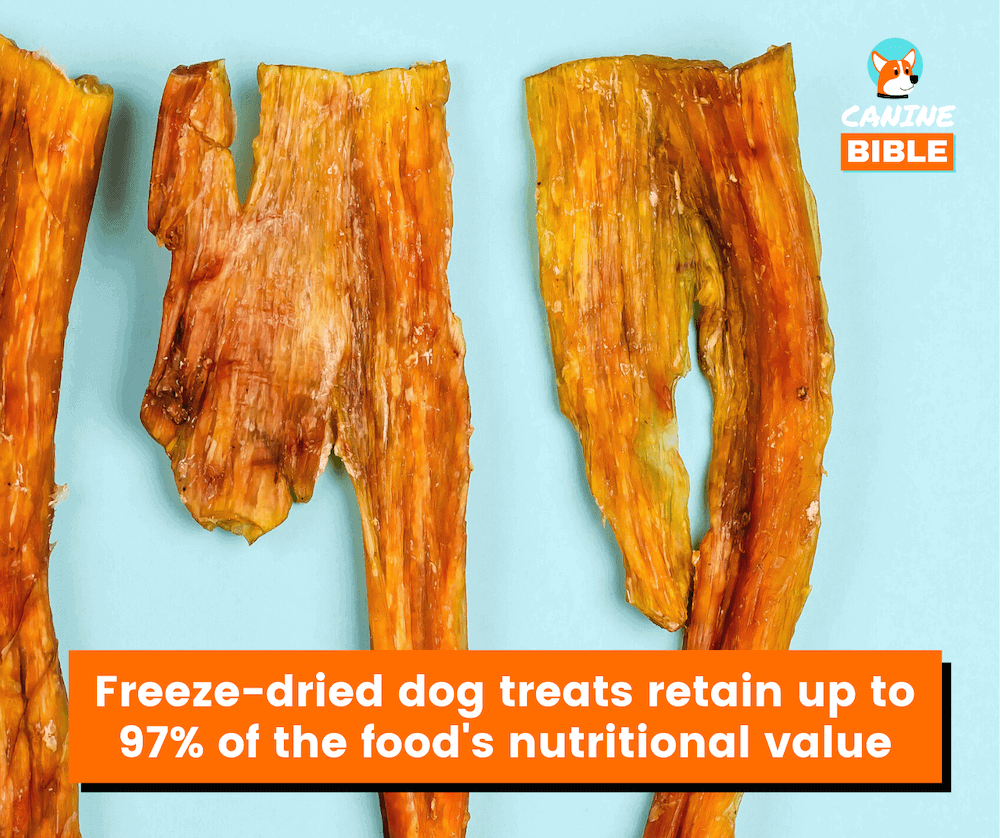
Freeze-dried treats can be a good option for dogs, primarily due to their high nutritional value retained during the freeze-drying process.
Freeze-drying preserves nutrients better than the baking process known as extrusion, which uses high heat and is common in traditional dog treats. Research indicates that extrusion can cause a reduction in the availability of several amino acids in food, such as arginine (21%), histidine (15%), aspartic acid (14%), and serine (13%).[2]
According to Harvest Right, a freeze-drying equipment manufacturing company, freeze-drying retains almost all the nutritional value of fresh food, up to 97%. In contrast, other preservation methods like canning and dehydrating preserve only about 60% and 40% of the nutritional value, respectively. This difference is because the high temperatures used in these methods destroy much of the food’s nutritional content.[3]
After raw food, freeze-dried dog treats provide the most amount of enzymes compared to other types of treats made through extrusion or dehydrating. Enzymes are vital for various bodily functions in dogs, from digestion and gut health to nutrient absorption, supporting metabolic and immune system health.
Benefits of Freeze-Dried Dog Treats
Other benefits of giving your dog freeze-dried dog treats include:
Are Freeze-Dried Dog Treats Safe?
Freeze-dried dog treats are generally considered safe. The best manufacturers of freeze-dried dog food and treats implement an additional process before freeze-drying to ensure product safety. This process, known as high-pressure processing (HPP), is a form of pasteurization used to eliminate bacteria while maintaining the integrity of the ingredients. Moreover, reputable manufacturers source their ingredients from USDA-certified and FDA-approved farms and produce them in facilities that meet human-grade standards.
However, since the freeze-drying process typically does not involve cooking the meat, there is an increased risk of bacterial contamination (including Salmonella, E. coli, and Listeria), which can pose a health risk to you and your dog. Although freeze-drying removes moisture from the treats, thereby slowing bacterial reproduction, the possibility of ingredient contamination remains.
Fortunately, the Food Safety Modernization Act enforces a zero-tolerance policy for bacteria in pet foods, forcing most manufacturers to adopt HPP. Additionally, the FDA regulates pet food products and provides guidance documents for all pet food, including commercially available raw foods for pets.
Since there is virtually zero water activity in freeze-dried dog treats, and bacteria require moisture to thrive, the freeze-drying process effectively eliminates a percentage of bacteria.[4]Are Freeze-Dried Dog Treats Healthy?
Freeze-dried dog treats are generally healthier than regular dog treats. They typically consist of a single ingredient and are made using human-grade components. Moreover, the freeze-drying process does not involve the addition of additives, artificial ingredients, sugars, chemicals, or mystery ingredients.
In contrast, most commercially available dog treats contain poorly defined ingredients, including sugars, and often exceed the recommended daily energy allowance for treats. This warning comes from researchers in a study published in the Vet Record journal.[5] The study found that three-quarters (76%) of the treats analyzed contained four to nine ingredients not precisely described on the label. ‘TODAY’ highlights that confusing or vague dog-treat labels could contribute to poor health and pet obesity.[6]
How Long Do Freeze Dried Dog Treats Last?
Unopened freeze-dried dog treats generally have a shelf life ranging from 1 to 2 years, though this can vary based on the specific product and ingredients. The removal of moisture during the freeze-drying process significantly extends their shelf life compared to fresh or traditionally processed treats.
Opened freeze-dried dog treats can typically last a few weeks to several months. This largely depends on the storage conditions and how well they are resealed after each use. These treats do not require refrigeration to stay fresh and can be kept at room temperature, away from humidity and direct sunlight.
Where to Buy Freeze-Dried Dog Treats
There are many places where you can buy freeze-dried dog treats. The most obvious starting point is your local pet store. However, we recommend shopping online for a wider selection of brands and potentially better deals.
We have tried and tested dozens of freeze-dried dog treats. If you are interested in purchasing some for your pup, check out our review article on the best freeze-dried dog treats.
Downsize of Freeze-Dried Dog Treats
While freeze-dried dog treats offer several benefits, there are some potential drawbacks.
Choosing to feed your dog healthier options like freeze-dried treats can be more beneficial for your pet in the long run. It’s not only better for your dog’s health but can also be more cost-effective compared to repeated veterinary visits and expensive medications that might arise from the unhealthy ingredients and chemicals found in some other dog treats.
How to Feed Freeze-Dried Dog Treats
Freeze-dried dog treats can be fed like regular dog treats or used as food toppers. Some can be given without adding water, while others may need rehydration before your dog eats them. Adding water to freeze-dried pet treats helps bulk them and improves their texture. If you feed them to your pup straight from the bag, your dog’s saliva will rehydrate the treats once in their mouth.
Can Puppies Have Freeze Dried Treats?
Puppies can start having freeze-dried treats when they are weaned and start eating solid food. However, the size of the treat should be appropriate for the puppy’s size and age. Large pieces might need to be broken down into smaller, manageable bits to prevent choking. Introduce freeze-dried treats slowly into your puppy’s diet to avoid upsetting their sensitive digestive systems. Start with small amounts and observe how they react before making it a regular part of their diet.
Freeze-Dried vs Dehydrated vs Baked Dog Treats
Here is how freeze-dried dog treats compare to other popular dog treat types
Freeze-Dried Dog Treats vs. Dehydrated Dog Treats
Dehydrated dog treats are made in a low-heat environment with air circulation to remove water and moisture. The food is essentially cooked because heat is applied over an extended period. This process partially retains the nutritional content of the food, but vitamins A and C are often broken down or lost due to heat, and thiamin can also be lost.[7]
In contrast, freeze-dried dog treats are not exposed to heat during manufacturing, preserving more of the raw ingredients’ nutritional content than dehydrated treats. The freeze-drying process involves freezing the food at very low temperatures and then using sublimation (a drying phase) to remove moisture. Since no heating is involved, most nutrients suffer minimal damage. Research indicates nutrient loss is more significant in dehydrated than freeze-dried food. For example, a study found that freeze-dried foods retained 63% of vitamin C, whereas foods dried using a heat pump retained only 25%, particularly in plant-based foods.[8]
Freeze-Dried Dog Treats vs. Dehydrated Dog Treats
Traditional baked dog treats are cooked at high temperatures, which can cause the loss of some nutrients and natural flavors. On the other hand, freeze-drying maintains most of the food’s original nutritional profile. Baked treats often include a wider range of ingredients, including grains and fillers, while freeze-dried treats usually focus on single-source proteins or whole foods. Due to their lack of moisture, freeze-dried treats typically have a longer shelf life and don’t require refrigeration, unlike some baked treats.
Freeze-Dried Dog Treats Vs. Raw Dog Treats
Freeze-dried dog treats retain most of their raw state’s nutrients, enzymes, and flavor, making them nutritionally rich options. However, raw treats are slightly more nutritious due to their completely unprocessed, natural state, which allows them to retain all their original nutrients. Typically, freeze-dried dog foods contain around 5% to 7% moisture, compared to 70% or more in frozen raw food. Freeze-dried dog treats can rehydrate in minutes, retaining raw food’s taste, texture, and smell. These treats are lightweight, easy to store, and have a long shelf life. They don’t require refrigeration and are less messy than raw treats, making them convenient for on-the-go feeding. While some dogs thrive on a raw diet, it might not suit all, especially those with certain health issues. In contrast, freeze-dried dog treats are generally safe for most dogs, including those with sensitive stomachs.
Frequently Asked Questions
Should You Feed Freeze Dried Treats to Your Dog?
Freeze-dried dog treats can be a healthy and beneficial addition to your dog’s diet, especially when chosen carefully for quality and used in moderation. They provide a great alternative to treats with artificial additives and can positively affect your dog’s overall health.
Freeze-dried treats are an excellent way to provide your dog with nutrients and hydration, and they can be a fun addition to your pet’s diet. Make sure you choose the right freeze-dried treat for your dog, and don’t overdo it. And as always, consult with your veterinarian if you have any questions or concerns about your pet’s diet.
Like It? Subscribe & Share!
Sources
Canine Bible uses only high-quality sources, including peer-reviewed studies, to support the facts within our articles. Read our editorial process and product review methodology to learn more about how we fact-check, test products, and keep our content accurate, reliable, and trustworthy.
- U.S. Food and Drug Administration. (1993, July). Lyophilization of Parenteral (7/93).
- Singh, S., Gamlath, S., & Wakeling, L. (2007). Nutritional aspects of food extrusion: a review. International Journal of Food Science & Technology, 42(8), 916–929.
- Harvest Right. (n.d.). How freeze drying works.
- Jiao, R., Gao, J., Zhang, X., Zhang, M., Chen, J., Wu, Q., Zhang, J., & Ye, Y. (2017). Short communication: Effects of vacuum freeze-drying on inactivation of Cronobacter sakazakii ATCC29544 in liquid media with different initial inoculum levels. Journal of Dairy Science, 100(3), 1674–1678.
- EurekAlert!. (2017, December 20). Most dog treats exceed recommended daily energy allowance.
- Today.com (2017, December 21). Science has some bad news about your dog treats.
- Ayegba, C., Makinde, O., Obigwa, P., & Orijajogun, J. (2017). Effect of Drying Temperature on Nutritional Content of Moringa Oleifera Leaves. World Journal of Food Science and Technology,
- Bhatta, S., Stevanovic Janezic, T., & Ratti, C. (2020). Freeze-Drying of Plant-Based Foods. Foods, 9(1), 87.

